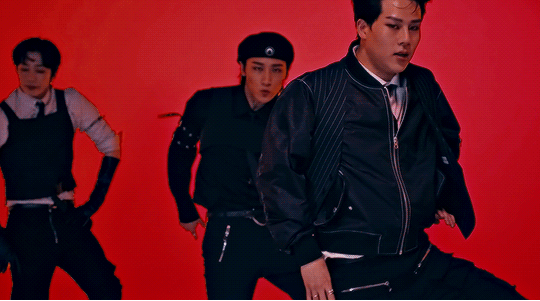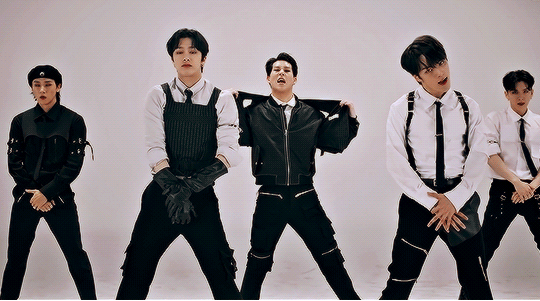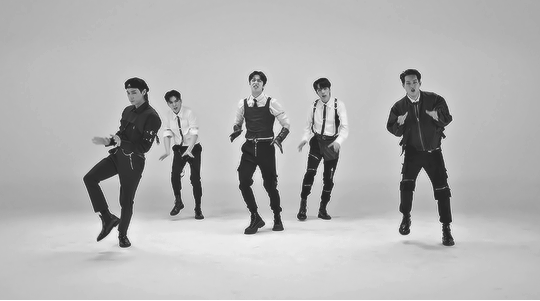#getting yet another gambler iteration out of my system
Photo









GAMBLER ♠ ♦ ♣ ♥ Performance Video
#mx7net#kpopccc#monsta x#minhyuk#kihyun#hyungwon#jooheon#changkyun#gambler#choreography#tuseral#usermowah#usergyukai#wabisarah#wings.gifs#wings.original#eyestrain#getting yet another gambler iteration out of my system#it's really hard to pick choreo moments when it's all good >:(#songs of all time etc
432 notes
·
View notes
Text
Madden NFL 20 Review - Some Stumbles, No Fumbles
New Post has been published on https://gamerszone.tn/madden-nfl-20-review-some-stumbles-no-fumbles/
Madden NFL 20 Review - Some Stumbles, No Fumbles
Continuing the Madden franchise’s recent tradition of story modes, Madden NFL 20 introduces a new narrative campaign. This new mode generally falls flat, but the pro football sim stands out on the field, with new additions that faithfully capture the essence of the NFL experience while making it fun to play again and again.
The new story mode, QB1: Face of the Franchise, replaces the Longshot story mode that was featured in Madden 18 and 19. Unlike those campaigns, which featured a pre-set character, Madden 20’s QB1 mode lets you create an entirely unique football star and guide him through the final stages of his collegiate career with the hopes of making an NFL starting roster, and, on a longer timeline, complete a journey to hoisting the Lombardi Trophy at the Super Bowl.
QB1’s story picks up as you decide which college to attend and play for. However, the college football elements within Madden 20 are not anything significant. You select a school from 10 options, including heavyweights like Florida, Oklahoma, Texas, and Clemson. It’s a treat to see fully licensed college football teams, complete with true-to-life jerseys, logos, stadiums, and marching band songs, but the gameplay experience in reality is limited to two games in the College Football Playoffs–and you can’t play the college teams in quickplay later on.
After winning the National Championship against all odds, you’re off to the NFL Combine where your performance in front of scouts and GMs determines how high you go in the draft. There are some genuinely funny moments here with your aloof agent Les Moore, and interactions with him are some of the best character moments in the story mode. After making it to the NFL, the game then disappointingly becomes the standard Franchise mode, except your character has more backstory that acts as fuel to drive you to succeed on the field. That’s the idea, at least; in practice, it leaves much to be desired.
In part, that’s because QB1’s cinematic cutscenes and Telltale-style choices end once you get to the NFL. At that point, the narrative beats play out through text messages you receive from fans and other players from around the league. This delivery method makes conversations awkward and ultimately forgettable. There is one storyline in particular involving a sick child rooting for you that falls flat; it tries too hard to tug on your heartstrings, moody piano pieces and all, without earning any payoff. Without giving too much away, another major storyline in QB1 involves your college teammate and friend, and it ends abruptly, with the strong suggestion that the story will continue in Madden NFL 21. That’s too bad, because this character, in the limited screen time he gets, is far more interesting than the cookie-cutter, run-of-the-mill one you create.
In general, QB1 moves at such a fast pace that it doesn’t allow for thoughtful character development. Not only that, but the story that QB1 does tell is hokey and clumsily unraveled. The story overall feels barebones and incomplete, with the entirety of the QB1 mode feeling like a half-baked idea in the end.
Despite the lackluster story and the way it’s delivered, QB1 succeeds in connecting you to your on-field performance and inspiring you to improve or play differently each week once you’ve made it to the NFL. The text message system, while not the best avenue for full conversation, is better utilized in delivering week-to-week objectives and challenges. You can complete these to earn XP, which you can then invest into your character in an RPG-lite-like system where you choose which aspects of your game you want to develop.
As an example, I responded with some trash talk against one of the league’s best cornerbacks, Richard Sherman, and my Game Day Goal, as it’s called, was to achieve 400 yards or more of offense and a 60-yard pass–not an easy task with Sherman in the backfield. The system is dynamic and responsive to what happens on the field week-to-week, and this is a nice touch that provides a further level of connection to your character and their status in the league.
Madden 20’s standard Franchise mode, which is separate from the QB1 mode, gets a welcome update this year. Its implementation of the new Scenario Engine, which lets you interact with players and coaches through the aforementioned text-message system, is the best new feature for Franchise. Like with QB1, having weekly objectives that you decide on is a compelling way to keep you interested and engaged in a 16+ week season that can otherwise get monotonous and repetitive. However, Franchise mode overall doesn’t get any other significant or meaningful updates this year, which might be a bummer for seasoned players wanting more.
Perhaps the biggest and most exciting change for Madden 20 are the new X-Factor and Superstar abilities. 50 of the league’s best players have been given these super abilities, and they revamp the fundamentals of Madden playmaking. X-Factor abilities are unlocked when you meet the qualifications to get “in the zone”–for some QBs, it’s throwing for 5 or more yards in the air multiple times without making a mistake–while Superstar abilities are passive traits tied to your player that are always active.
The new X-Factor abilities are truly game-changers, and they further emphasize the distinction between the average NFL player and elite athletes. For example, the Gambler X-Factor ability–which only Aaron Rodgers has–makes it impossible for AI defenders to intercept his passes. Similarly powerful X-Factor abilities are available for defenders as well, and that helps balance things out. Not only that, but X-Factor abilities can be lost quickly; a QB who takes a sack is immediately out of the zone, while dropped passes and fumbles also cancel out these abilities.
These abilities, when combined with an elite player like Madden 20 cover star Patrick Mahomes (who has incredible baseline stats to begin with), become overly powerful in some instances. Mahomes’ unique passive Superstar abilities give him immense speed and dexterity out of the pocket, on top of his already powerful and accurate arm. When teammate Travis Kelce unlocks his own X-Factor ability (which gives him a guaranteed aggressive catch on any single-man coverage), it becomes simply too easy to complete big plays down the field.
Outside of that issue, the new X-Factor and Superstar abilities introduce a level of strategy that the Madden series has never seen. I found myself often weighing up whether I should pursue the X-Factor qualification conditions or choose lower-risk plays that are more likely to be successful. At pivotal stages, like in the fourth quarter or in a third-and-long situation, this level of risk/reward is heightened. Not only that, but with 50 X-Factor abilities spread across players on the 32 NFL teams, it encourages you to try new teams and strategies.
Importantly, X-Factor abilities do not feel gimmicky or too overpowerful for the most part as they’re difficult to unlock and have numerous counters. Stephon Gilmore of the New England Patriots, for example, has an X-Factor ability called Acrobat that allows him to perform a diving move where he makes an incredible pass breakup. Some pass-rushers, too, including Aaron Donald of the Los Angeles Rams, can shred the defense and break the O-Line easily to sack the quarterback for a big loss. The saying “any given Sunday” is truer than ever in Madden 20 thanks to the X-Factor abilities.
Overall, the on-field action in Madden this year is better than ever. The game provides more on-screen info than last year’s iteration, making it easier to see things like decision-making specifics (such as average yards-per-play or yards given up) and which elite offensive and defensive players have X-Factor and Superstar abilities. This makes for an easy way to help you see the odds of having success with a play before the snap. The playbook menus (and menus overall, for that matter) are cleaned up and brighter, which helps you see important information at a glance.
Also new this year are Run-Pass Options added to playbooks. These hybrid plays provide yet another way for play-callers to mix things up and keep defenders guessing. There are also numerous player-specific animations, including Aaron Rodgers’ signature quick release and Patrick Mahomes’ sidearm throw. This all works together to make Madden 20 closer than ever to replicating the look and feel of actual pro football. Nothing in the updated gameplay mechanics for Madden 20 is as substantial as the introduction of Real Player Motion from last year, but the controls in Madden are as good as they’ve ever been thanks to further refinement on last year’s improvements and the introduction of some welcome tweaks and small changes. A subtle gameplay change for 2019 is that you can double press the receiver icon to pump fake; this small change makes it easier than ever to trick a defender into biting on a pass route, providing yet another level of depth and control.
The core fundamentals that underpin Madden 20’s gameplay feel more solid and dependable than ever. Mistakes like poor passes, missed tackles, and bad decision-making are yours and yours alone to own because the controls rarely, if ever, let you down.
Also notable for Madden 20 is what’s (generally) not there: bugs. After many hours with the game, I only experienced a handful of minor glitches, though your mileage may vary, and it’s worth noting that you can continue to expect other oddities like out-of-place commentary and some sideline players executing the same animations all the time. I also experienced what felt like an unusually high number of facemask calls and injuries.
Now in its third year using EA’s Frostbite engine, Madden 20 also looks very good with its better-looking player models that have richer detail and more realistic flourishes (except for Greg Olsen; what happened there?). The Madden 20 game engine also provides gorgeous environmental effects like glistening sun rays peeking through the clouds and casting shadows on the field and snow effects that limit your vision and force you to suggest playing more conservatively to accommodate for the wintry conditions.
The commentary team composed of Brandon Gaudin and Charles Davis also return in Madden 20, and they are consistently a treat to listen to. Despite some lines being repeated from time to time (how many times do we have to hear that Julian Edelman was a quarterback in college or that Tom Brady was initially drafted to play baseball?), the pair deliver the right mixture of lines that keep you informed and engaged in equal measure. Madden 20’s overall broadcast, presentation, and gameplay packages aim to replicate the real-life NFL experience, but it continues to be a shame that the voicelines–at least all the ones I heard in over 20 hours with Madden 20–do not comment on real-world NFL issues. As with previous years, the commentary will be updated regularly throughout the season.
Among Madden 20’s other modes is the fantasy team-building card-based Ultimate Team, and this continues to be the game’s richest when it comes to the sheer multitude of challenges to complete. It remains a thrill to build a fantasy team and compete either against other fantasy AI teams or the world at large through online play.
A subtle yet enjoyable change for MUT this year is how you can move from one challenge to the next without returning to the menu screen, which is great considering how many there are to complete. There is also a new “Mission” system that helps you select the right challenges to complete in order to acquire items for your deck. In years past, MUT could feel like a hard-to-parse system that you slogged through waywardly, but the new system gives you more direction, and as such it is more respectful of your time.
Ultimate Team does have issues with microtransactions, however. At the very start, the tutorial instructs you to visit the store where you can make real-money purchases, which feels like an unnecessary nudge toward spending extra. As with past iterations of MUT, it can feel like a grind to get the cards you want, which in turn encourages you to consider spending money on microtransactions when you otherwise might not. That rubbed me the wrong way, but MUT overall is still an enjoyable and engaging mode that I expect to return to again and again.
Madden NFL 20 is an improved version of the annualized professional football series that excels in some areas and leaves something to be desired in others. The new QB1 career mode–which includes a barebones NCAA football experience–overall feels like a half-baked idea that doesn’t deliver anything meaningful or interesting. When it comes to the on-the-field action, however, the new X-Factor and Superstar abilities shake up the familiar gameplay formula to give seasoned players and newcomers alike a fresh way to scheme plays and orchestrate strategy on both sides of the ball.
Source : Gamesport
0 notes